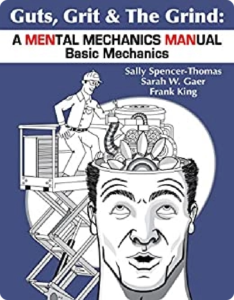In the transportation industry, safety is typically measured in numbers: accident rates, compliance scores, and mechanical checklists. But as any seasoned professional knows, there’s more to the safety equation than just a well-tuned engine or a rigorous maintenance schedule. Increasingly, leaders recognize that the well-being of employees—their mental health—plays a decisive role in overall safety outcomes.
For professionals working long hours on the road or managing the complexities of transit operations, stress and burnout have become unwelcome but constant companions. These challenges aren’t merely individual; they affect the entire ecosystem of an organization. Elevated stress levels can impair judgment, increase reaction times, and even lead to errors that compromise both safety and productivity. Despite these risks, traditional safety protocols often remain silent on the subject of mental health.
A growing body of research highlights the benefits of integrating mental wellness into existing safety programs. Just as routine vehicle inspections anticipate mechanical failures before they become catastrophic, proactive mental health measures can help identify and mitigate stress before it culminates in burnout or worse. For instance, open discussions about mental health, regular screenings, and proactive training in coping strategies are no longer optional extras; they’re essential.
The key lies in cultivating a company culture that sees mental strength as a crucial safety skill. Industry leaders need to promote an environment where employees feel safe to discuss their stressors, anxiety, and mental fatigue without fear of retribution or stigma. This open dialogue not only enhances personal well-being but also lays the foundation for a more alert, engaged, and ultimately safer workforce.
Workshops and keynotes that focus on these issues are becoming central to industry conferences. By educating teams on how to spot the early signs of mental distress, organizations can empower employees with the tools they need to take action before a crisis develops. Meanwhile, relatable and candid speakers—those who have turned personal struggle into strength—offer invaluable insight. Their stories break down preconceived notions of invulnerability and encourage a proactive approach to mental wellness.
One effective strategy involves drawing parallels between physical and mental maintenance. Just as vehicles require regular servicing to ensure safe operation, so too must individuals tend to their mental health. Techniques such as mindfulness training, regular breaks, and structured peer-support systems can serve as the “oil change” that prevents a breakdown on both a personal and professional level.
For those managing teams in the transportation industry, the challenge is clear: it’s time to expand the definition of safety. Incorporating mental health into safety programs isn’t simply about reducing risks—it’s about creating an environment where every employee, from the most experienced veteran to the newest recruit, has the support they need to thrive. In doing so, companies not only improve the well-being of their workers but also enhance operational efficiency and resilience.
Ultimately, by rethinking what it means to be “safe,” industry leaders can drive meaningful change. Embracing a holistic approach that values mental health just as much as physical maintenance is not only good business—it’s a life-saving imperative.
Make a Quick Call

